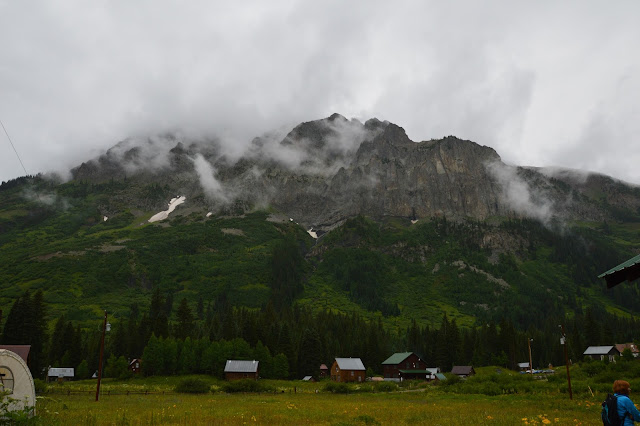In the afternoon, we visited Rocky Mountain Biological Laboratory north of Crested Butte. Ian Billick, the Executive Director, gave us a tour of the research facilities and herbarium. RMBL was founded in 1928, covers 1500 acres and serves as a platform for a wide array of field research. It is a particular hotspot for pollination biology research since the natural diversity of pollinators has not been impacted by the introduced honeybee. Other interesting research projects include introduced plants and their impact on butterflies, and the ability of alpine plants to compete with lower-elevation plants. The latter scenario could occur as climate change causes plants to move up in elevation with rising temperatures. Denver Botanic Gardens also helped RMBL propagate some locally-collected plants to use in research projects.
 |
| Iron Fen |
 |
| Iron Fen |
 |
| Drosera rotundifolia |
 |
| Drosera rotundifolia closeup |
 |
| Eriophorum altaicum var. neogaeum, whitebristle cottongrass, is a rare plant in Colorado. The species is also found in the Altai Mountains. |
 |
| A clearing near the fen provided scenic views. |
 |
| Dr. Rick Williams, a pollination biologist, has been in charge of the herbarium at RMBL for the past 7 years. |
 |
| A hoophouse provides growing space for an Ipomopsis research project. |
 |
| The backdrop for RMBL, which was built on the site of the abandoned mining town Gothic. |
This is wonderful and fascinating information.
ReplyDeleteLovely Eriophorum!
ReplyDeleteLove the Drosera rotundifolia!
ReplyDeleteAhhh! I love the fen!
ReplyDelete